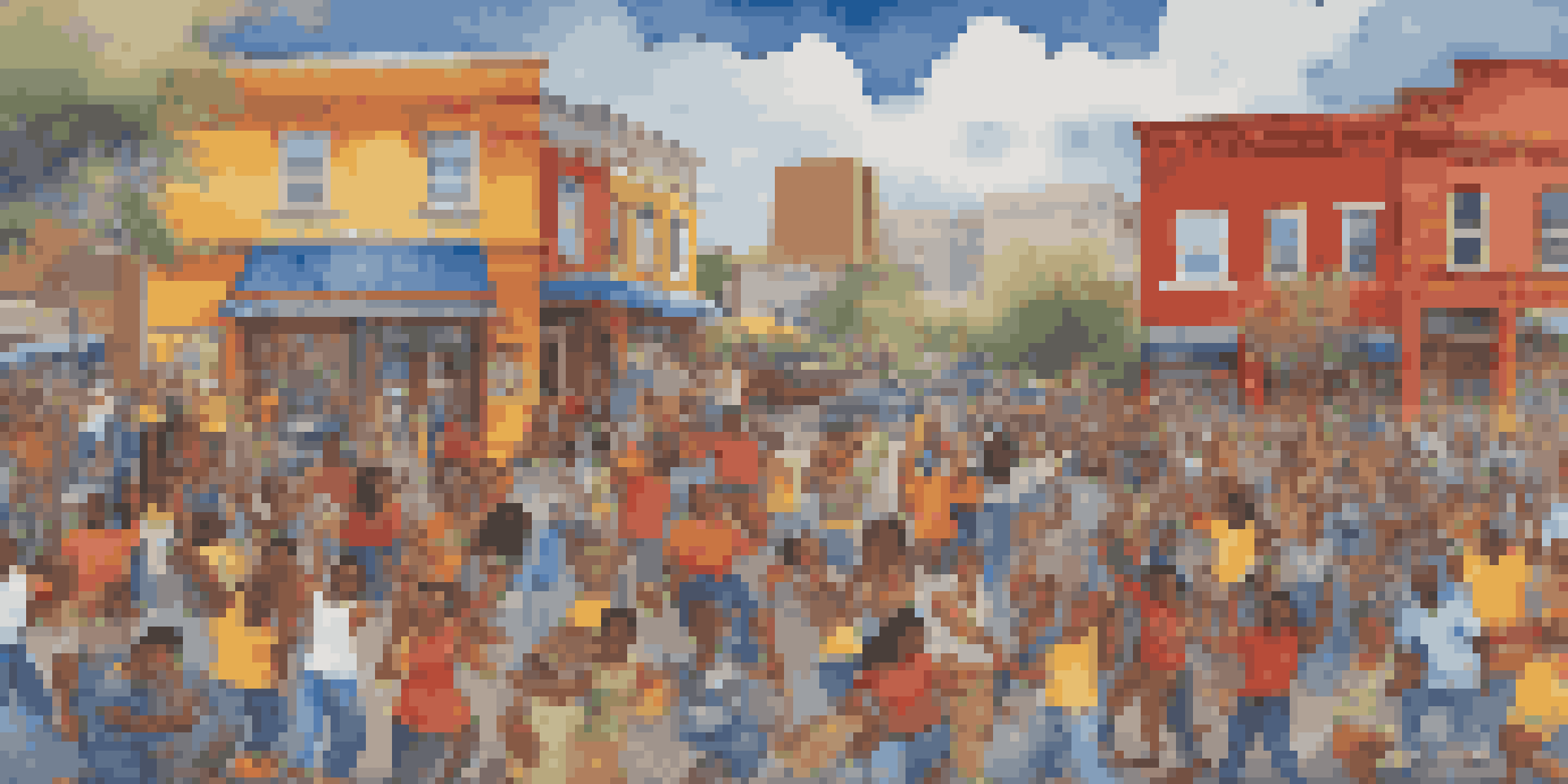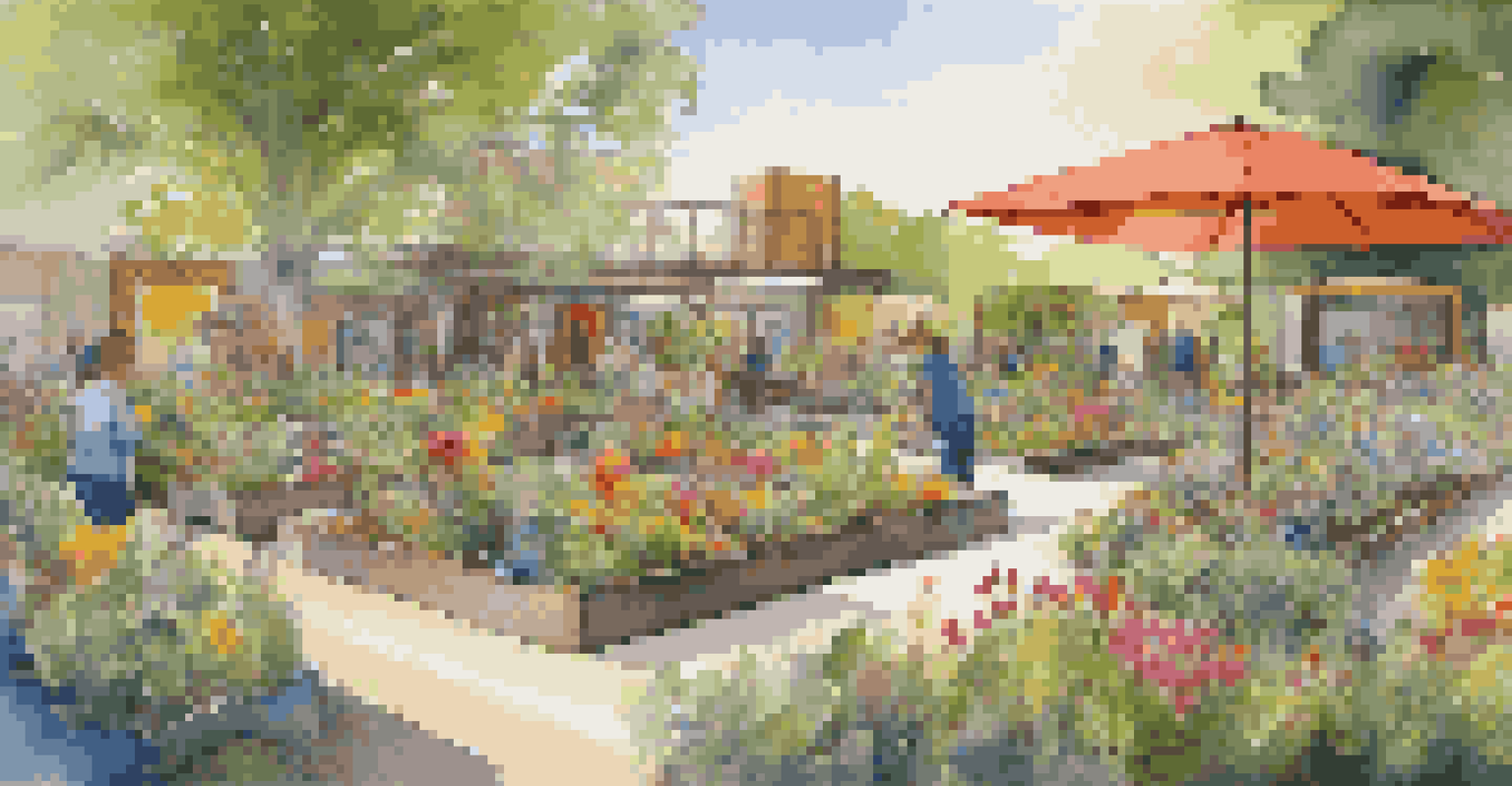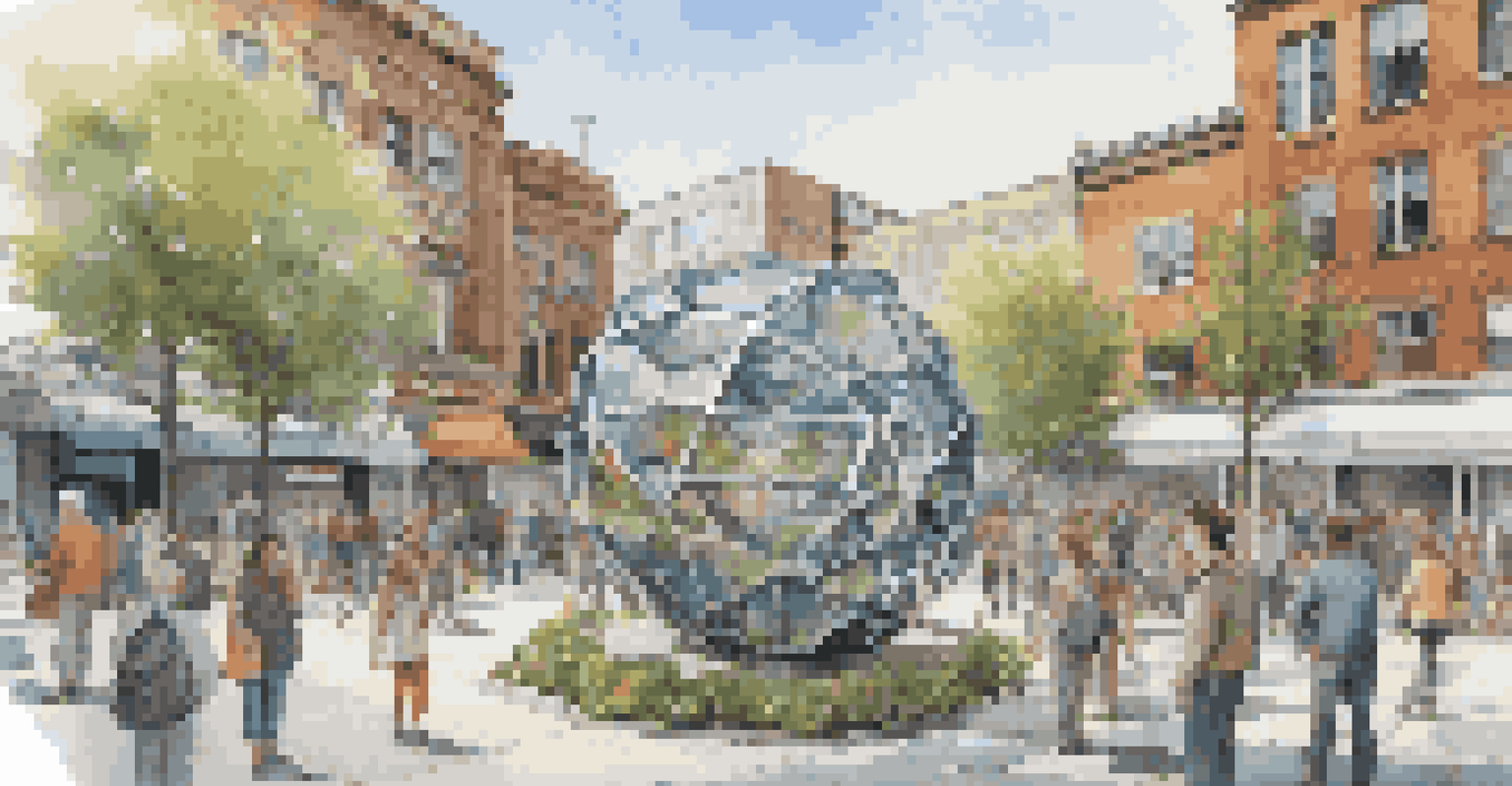Art as a Tool for Advocacy in Community Development

Understanding Art as a Catalyst for Change
Art has a unique ability to resonate with emotions, making it a powerful catalyst for change. It can capture the essence of community struggles and triumphs, transforming personal experiences into collective narratives. For instance, murals depicting local history can foster pride and provoke conversations about social issues.
Art is not what you see, but what you make others see.
When communities engage with art, they create a shared space for dialogue, allowing voices that are often marginalized to be heard. This sense of inclusion can inspire action and motivate individuals to advocate for their needs and rights. Art becomes not just a reflection of society but a tool to reshape it.
Moreover, art transcends language barriers, making it an inclusive medium. Whether through visual arts, music, or performance, creative expressions can unite diverse populations around common goals, fostering solidarity and collaboration. This collective approach amplifies the impact of community advocacy efforts.
Art as a Voice for Marginalized Communities
For many marginalized communities, art serves as a powerful voice to express their stories and struggles. Through various art forms, individuals can share their experiences, highlighting social injustices and advocating for change. For example, spoken word poetry often addresses themes of identity, oppression, and resilience, resonating deeply with audiences.

Art can also help to challenge stereotypes and misconceptions about marginalized groups. By showcasing their narratives through visual arts or performances, these communities can shift public perception and foster understanding. This not only empowers individuals but also encourages broader societal change.
Art Engages and Empowers Communities
Art fosters dialogue and inclusion, enabling marginalized voices to advocate for their rights and needs.
In essence, art becomes a medium for healing and empowerment, allowing communities to reclaim their narratives. When marginalized voices are amplified through artistic expression, it creates a ripple effect that can inspire advocacy and mobilize support at local, national, and global levels.
Creating Community Identity through Art
Art plays a crucial role in shaping community identity, providing a sense of belonging and shared purpose. Community art projects, such as public murals or local theater productions, can foster pride and connection among residents. This communal involvement strengthens bonds and encourages active participation in community development.
The role of the artist is to ask questions, not to answer them.
When communities come together to create art, they celebrate their unique heritage while addressing current challenges. For instance, a community garden can transform into a canvas for artistic expression, showcasing local culture and values. This not only beautifies the space but also instills a sense of ownership and responsibility among residents.
Furthermore, these artistic endeavors often lead to increased civic engagement. Residents who feel a strong connection to their community through art are more likely to participate in local initiatives, attend town hall meetings, and advocate for positive change. Thus, art becomes an essential thread in the fabric of community identity.
Art as a Tool for Education and Awareness
Art can be a powerful educational tool, raising awareness about pressing social issues. Through workshops, exhibitions, or educational programs, communities can explore topics such as environmental sustainability, health, and social justice. This experiential learning fosters a deeper understanding of complex issues.
Moreover, art can simplify difficult concepts, making them accessible to a wider audience. For example, an interactive installation might illustrate the impact of climate change in relatable terms, prompting viewers to reconsider their own habits. This approach not only informs but also inspires action.
Public Art Enhances Community Identity
Public art transforms spaces and strengthens community bonds by reflecting local culture and values.
By integrating art into educational initiatives, communities can cultivate critical thinking and creativity. Engaging individuals in the artistic process encourages them to express their thoughts and ideas, leading to innovative solutions for community challenges. Here, art becomes a bridge between awareness and action.
The Role of Public Art in Community Development
Public art installations can significantly enhance community spaces, creating vibrant environments that reflect local culture. These artworks often serve as landmarks, drawing visitors and fostering economic development. A well-placed sculpture or mural can transform a neglected area into a lively gathering spot.
In addition to beautification, public art can spark conversations about community values and aspirations. When residents see their stories and histories represented in public spaces, it strengthens their connection to the area. This sense of ownership can motivate individuals to invest in the community's future.
Furthermore, public art can encourage tourism, providing economic benefits to local businesses. As visitors come to admire these installations, they often explore nearby shops and eateries, thus boosting the local economy. Public art, therefore, becomes a multifaceted tool for community development.
Collaboration Between Artists and Community Organizations
Collaboration between artists and community organizations can amplify advocacy efforts and create meaningful change. Artists bring creativity and innovation, while organizations provide resources and local insight. This partnership can lead to impactful projects that resonate with community needs and aspirations.
For instance, community workshops led by artists can engage residents in the creative process, enabling them to express their ideas and concerns. This collaborative approach ensures that the art produced reflects the community's voice, fostering a genuine sense of ownership. Moreover, it empowers residents to advocate for their interests through artistic expression.
Collaboration Drives Sustainable Change
Partnerships between artists and community organizations amplify advocacy efforts, ensuring art resonates with local needs.
These collaborations can also enhance the sustainability of community initiatives. By leveraging the skills and networks of both artists and organizations, projects are more likely to thrive and adapt to changing community dynamics. In this way, art becomes a driving force for long-term community development.
Measuring the Impact of Art in Community Advocacy
Measuring the impact of art in community advocacy can be challenging but is essential for understanding its effectiveness. Qualitative metrics, such as community engagement and participant feedback, can provide valuable insights into the influence of artistic initiatives. Surveys and interviews can capture personal stories that illustrate the transformative power of art.
Additionally, quantitative data, such as attendance at events or changes in community participation, can help gauge success. Tracking these metrics over time allows communities to assess progress and identify areas for improvement. It also helps secure funding and support for future projects.

Ultimately, demonstrating the impact of art in community advocacy not only validates its importance but also paves the way for more extensive initiatives. By showcasing success stories and tangible outcomes, communities can inspire others to harness the power of art for positive change.